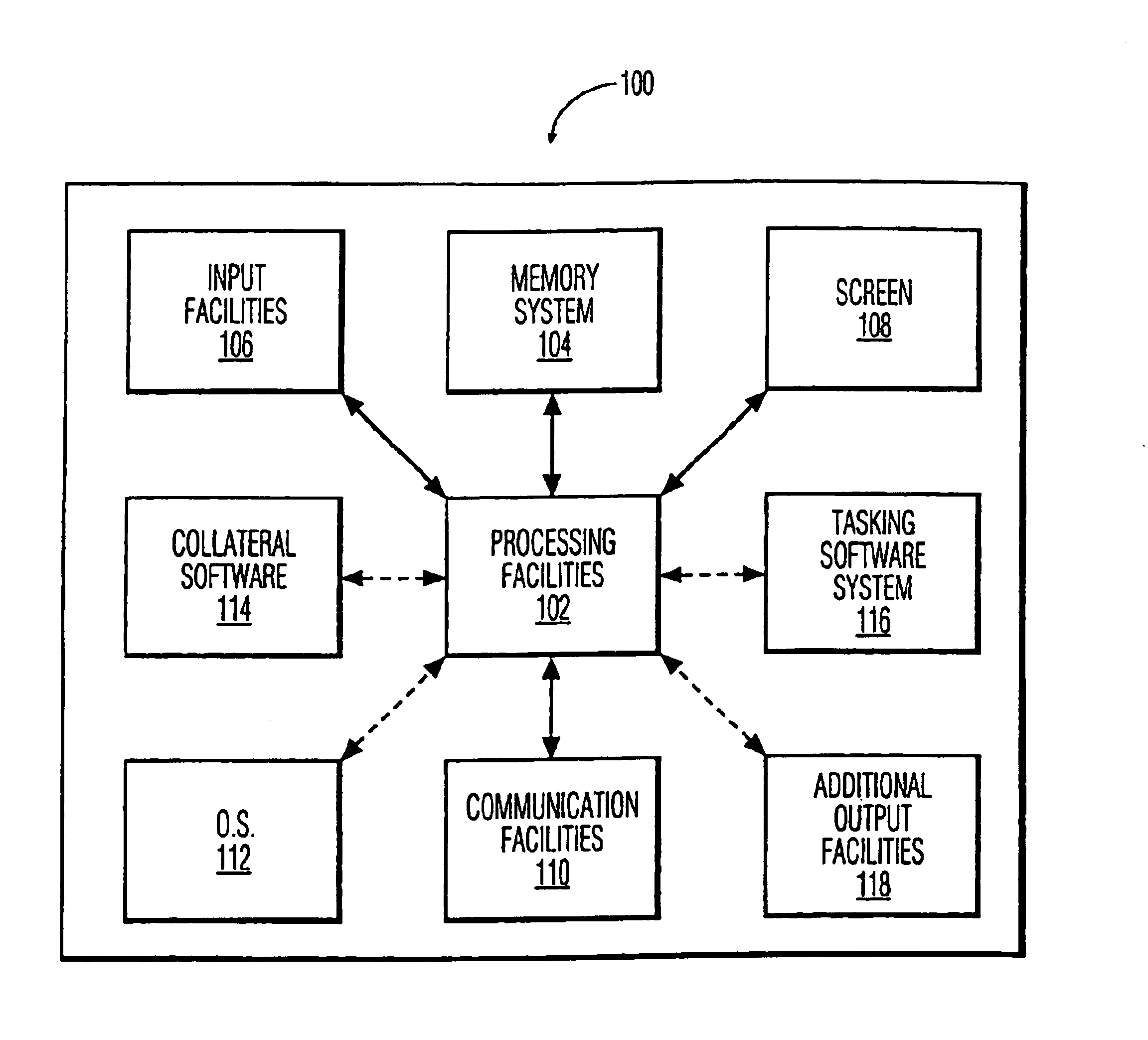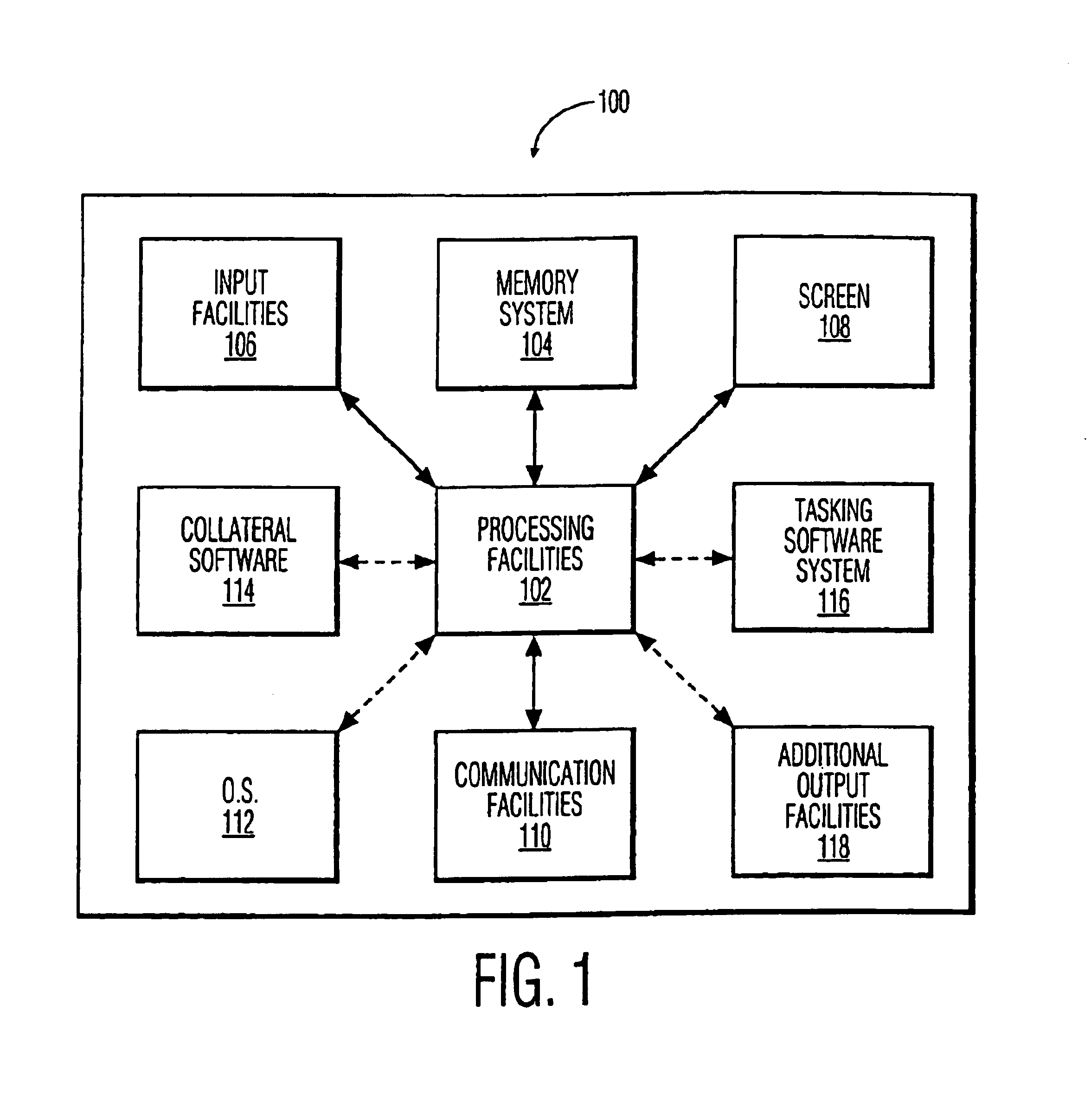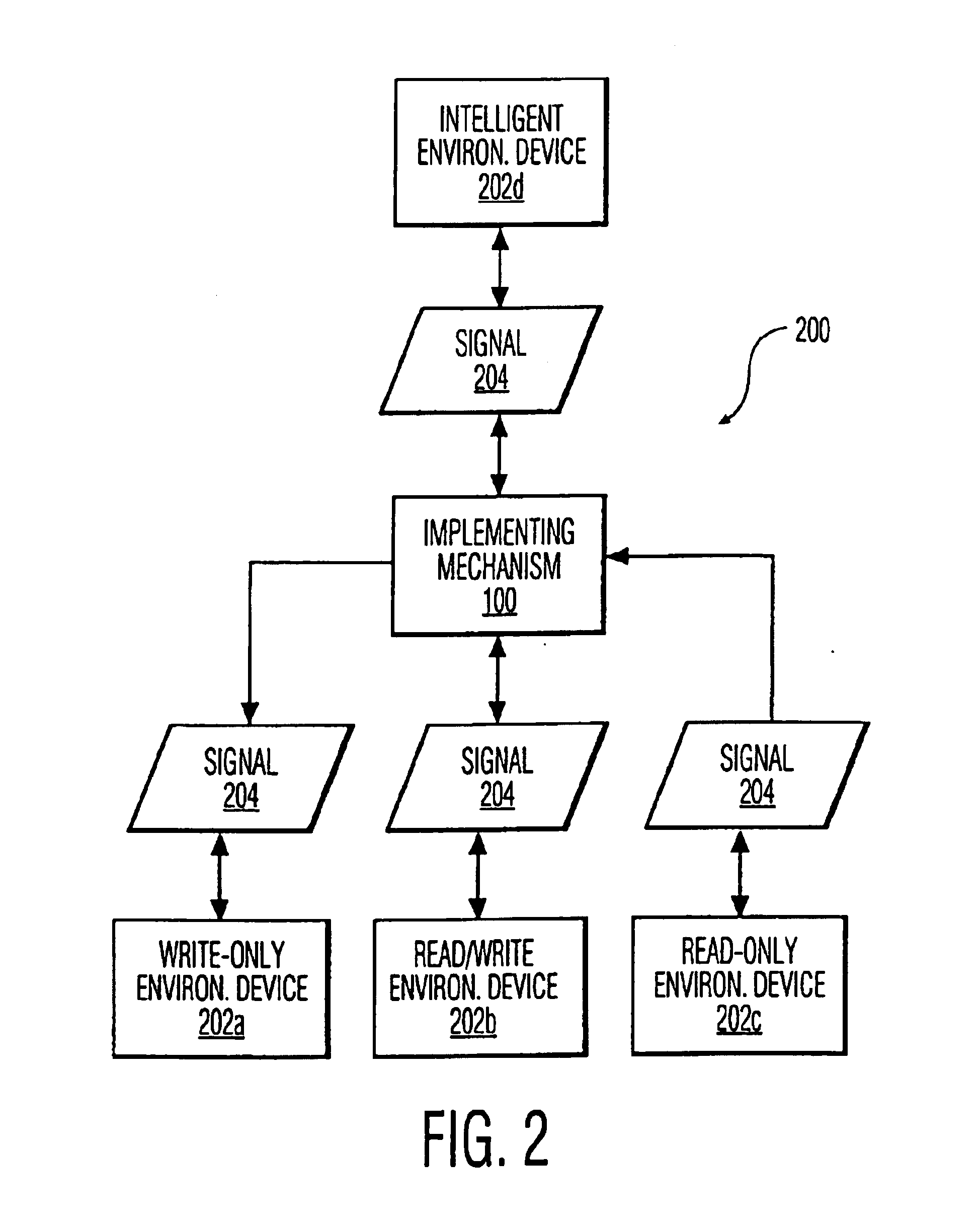Clustering of task-associated objects for effecting tasks among a system and its environmental devices
a task and task-associated technology, applied in the field of task-associated objects for effecting tasks among a system and its environmental devices, can solve the problems of remote's efficacy tending to be limited, remote's efficacy tending to plateau and even diminish, respectively, and achieve the effect of enhancing the effect of associated tasks
- Summary
- Abstract
- Description
- Claims
- Application Information
AI Technical Summary
Benefits of technology
Problems solved by technology
Method used
Image
Examples
Embodiment Construction
Overview
The present invention comprises tasking systems supporting user interfaces for displaying objects, the displayed objects enabling user access to resources that provide for effecting tasks among the system and devices of the systems' environment (“environmental devices”). More particularly, the present invention comprises tasking systems having the foregoing features, wherein the systems support clustering operations respecting such objects so as to enhance effecting of the associated tasks, such clustering operations responding to context. Generally, tasking systems support clustering operations, both adaptively and dynamically. Toward providing such features, tasking systems preferably support the tracking of selected states, including, as examples, one or more of environment, device, system and temporal states.
In this specification, the term “environment” embraces any combination of living (e.g., rooms in a home), work (e.g., an office, conference room or cubicle hive), sh...
PUM
 Login to View More
Login to View More Abstract
Description
Claims
Application Information
 Login to View More
Login to View More - R&D
- Intellectual Property
- Life Sciences
- Materials
- Tech Scout
- Unparalleled Data Quality
- Higher Quality Content
- 60% Fewer Hallucinations
Browse by: Latest US Patents, China's latest patents, Technical Efficacy Thesaurus, Application Domain, Technology Topic, Popular Technical Reports.
© 2025 PatSnap. All rights reserved.Legal|Privacy policy|Modern Slavery Act Transparency Statement|Sitemap|About US| Contact US: help@patsnap.com



